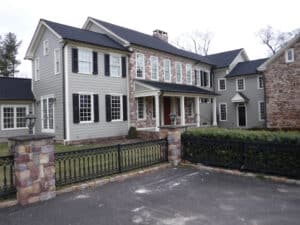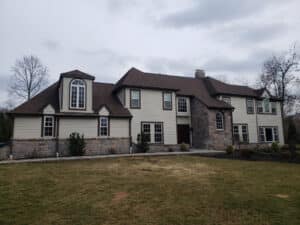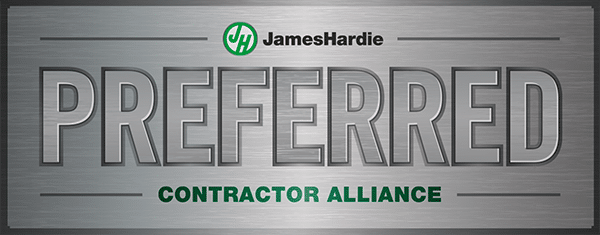Note: The name of the community (“Maple Hill”) and resident (“Mr. Rogers”) were changed before posting for privacy. This is a copy of Ai Restoration’s response that was sent to all residents of “Maple Hill.”
Ai Restoration was contracted by a homeowner at Maple Hill to perform the needed restoration work to their stucco this spring. They received a letter with an attached article which has been circulating around Maple Hill and asked us to review it. The letter was written by a homeowner at Maple Hill, Mr. Rogers and was an honest summary of the article “Refinishing Stucco” hosted on the Bob Villa web site. Overall the article is inaccurate and misleading. The author of “Refinishing Stucco”, Maureen Blaney Flietner, is a freelance writer, not someone with industry experience. Ai Restoration took the time to respond to these inaccuracies. We hope you find our included written response informative.
Ai Restoration would like to thank Mr. Rogers for taking a closer look at some of the options available to rehabilitate Maple Hill’s stucco. The amount of information available is daunting and sifting through it all can become overwhelming and confusing. After reading “Refinishing Stucco” by Maureen Blaney Flietner and hosted on the Bob Villa web site, it became apparent that Ai had to respond to Mr. Rogers’ letter and this article. Some statements within the article are incorrect and overall the article is misleading. Despite gross inaccuracies, the article does serve to get the ball rolling on some pivotal concerns.
Stucco has been around for over three millennia. The actual stucco material itself is very basic, but problems that stem from it can become very complex when combined with today’s building systems. The application of traditional stucco has failed to stay current with other changes in construction, resulting in numerous problems that have only recently surfaced.
Recent changes in building procedures have resulted in decreased stucco system longevity. The past few decades of new home construction have put an incredible emphasis on maximizing energy efficiency within a home. As a result of this emphasis, many building materials were changed. How these new materials would interact with water was not sufficiently understood. Unfortunately, it has taken years to discover how a traditional stucco system would need to be altered to cope with water’s interaction within the new framework materials. Some important changes and additions to traditional, or hard-coat, stucco systems are: control joints, window flashing, stucco stop, weep screeds, drain fields, diverters, kick-outs, flexible joints at dissimilar surfaces, among others. Most of these important new features of a stucco system, such as weep screeds, are not present in Maple Hill. Trying to repair a dated, failing stucco system with more stucco is not a solution.
Patchwork repairs often produce less than appealing aesthetic results, while further weakening the system by adding unprotected cold joints. Color matching stucco is not as accurate as one would expect. Generally, the older the stucco is, the harder it is to match. The stucco at Maple Hill originated from manufactured premixed bags. If this same premix is put on top of the existing weathered stucco, obtaining an exact color match will be extremely difficult and repairs will be visible. Another concern is how well the texture can be matched. There are 30 primary stucco texture styles with endless variations of each. If the texture style is off, repairs will again be noticeable. Visible repairs of this nature often leave homeowners dissatisfied, decrease home values, and jeopardize the association’s ultimate approval. Finally, when stucco is patched, cold joints are formed. Encompassing the entire perimeter of the repair, a cold joint is the intersection of the new stucco with the existing stucco. The stucco bond is weakest at this joint. If left untreated, the majority of the cold joints will crack. When stucco repairs are made they should be protected and visually blended in with a good, waterproof elastomeric coating. A clear sealer should not be used in place of a coating.
For a damaged stucco system, the level of repair required for proper installation of a clear sealer, without sacrificing looks and performance, is immense and costly. These sealers penetrate into the stucco and fill the pores. Shortly after they are applied, water will literally bead off the stucco like a newly waxed car. Although clear sealers are a substantial part of our company’s repertoire, Ai does not recommend them for a failing stucco system. The stucco must be in excellent condition for a clear sealer to be effective. Sealers are designed for preservation, not restoration.
The biggest downside to clear sealers is their inability to repair or prevent cracks within the stucco. A clear sealer cannot bridge, or fill, cracks. Sealing a stucco system with cracks present will defeat the purpose of the sealer, because water will simply penetrate through the cracks. It will also increase the amount of water running down the surface of the wall and force more water through any existing cracks. If the cracks are repaired with any type of cementious material, like more stucco, they will simply crack again. Cracks must be filled with a specialized flexible material. Although this is an excellent mechanical fix, the filled cracks will not blend in satisfactorily, unless the building is coated. Any other repairs made to the stucco will not be hidden or color corrected if simply clear sealed. Additionally, sealed stucco cannot guard against future cracking like coated stucco does. Clear sealers applied to failing stucco are an ineffective waste of money.
Even though clear sealers are not suitable for the majority of Maple Hill, waterproofing your home is still the most fundamental objective. The majority of all stucco problems originate from, and are amplified by, water. The most significant of these problems arise when water penetrates beyond the stucco system and comes in prolonged contact with the framing system. As with the majority of traditional stucco installed before the turn of the century, Maple Hill’s stucco is not capable of managing water penetration through the stucco system. Problems resulting from system breaches include, but are not limited to: delamination and cracking of the stucco, rot and structural damage, mold and mildew, insect infestation, and structural failures. These water infiltration problems commonly originate from cracks within the stucco, but are also often traced to failures of roofing and flashing, window and door joints, and other dissimilar surfaces to the stucco.
Coating applicators must have extensive knowledge of not only the complete stucco system, but also all parts of a building that contribute to, or are impacted by, any changes made to the stucco. Furthermore, the dynamics of moisture movement as related to these systems must also be understood and provided for. Only after leaks are remedied and detail work is completed should a coating be installed. Painters moonlighting as stucco restoration contractors usually lack this competence and frequently compound the exact same problems they were hired to alleviate. In addition to these painters, the general public has not been equipped to recognize faults in product selection and/or application. Without the knowledge to see otherwise, the “paint” becomes the scapegoat when a failure occurs. Ai fully believes that the professional application of the proper stucco coating will decrease the potential for damage caused by the infiltration of water through stucco.
The largest misconception of all is the breathability of stucco and how it is effected by a coating. Slanted and uniformed sources champion stucco’s natural breathability, but putting a positive emphasis on this affinity for water is counterproductive. After the building phase, when stucco is fully cured, it does not require water for any reason. Hard-coat stucco absorbs, channels, and sheds water in great quantities. There is not one single benefit to wet stucco. When combined with even the tiniest faults in construction, which are increasingly rampant, water becomes severely destructive. Why encourage or even tolerate something that is unnecessary and destructive? Traditional stucco’s affinity for water acts only as a vehicle for damage. Once water is eliminated from stucco its associated problems wash away.
Four Classes of Vapor Permeance
| Impermeable | Examples: glass, aluminum foil, sheet metal | 0.1 perm or less |
| Semi-Impermeable | Examples: oil-based paints and vinyl wallpaper | 1.0 perms or less and greater than 0.1 perm |
| Semi-Permeable | plywood and latex paints | 10 perms or less and greater than 1.0 perms |
| Permeable | house wrap, cellulose insulation and drywall | Greater than 10 perms |
Water, when in vapor form, must also be examined. Buildings are designed to allow the passage of water vapor between the interior and exterior walls. Permeability, or permeance (perms) is a measure of a substance’s ability to diffuse water molecules. Think of permeance as how much something can breathe. The higher the perm rating, the more breathable a substance is. All substances fall into one of four vapor permeance categories. The chart to the right explains the vapor permeance categories. The permeability of building materials controls a structure’s natural respiration.
When considering vapor transmission between the exterior and interior walls, the high breathability of stucco, (predominantly composed of Portland cement), plays less of a role than most think. To help explain why this is, please download the Vapor Permeance Chart PDF provided by the Building Science Corporation (BSC). Since the data in this chart contradicts claims made in “Refinishing Stucco,” it is important to examine the source. Building Science Corporation is composed of internationally recognized experts on moisture dynamics as related to building technology. Members of this corporation are closely involved in researching and developing national and international building standards and testing procedures (ASTM, ASHRAE). They are not contractors or manufacturers pushing products or a collection of freelance writers, photographers, and hobby farmers from Wisconsin, (see Maureen Blaney Flietner, author of “Refinishing Stucco.”) BSC’s chart defines “Traditional three-coat hard-coat stucco over building paper and OSB or plywood sheathing,” the same system present in Maple Hill, as ranging from “less than 1.0 perm and greater than 0.1 perm.” The net result is that highly permeable stucco becomes semi-impermeable when installed as a complete system. With respect to vapor transmission, the specific permeance of actual stucco is utterly irrelevant.
The strong effect of climate on stucco systems does not allow for stucco to be generalized on a national basis, though it often is. Temperature, humidity, and pressure differences between the interior and exterior of a building have significant effects on vapor transmission. Avoiding technical explanation, a quick example can be made of a home in the Miami heat that will have air conditioning running year round. The air conditioner reduces the humidity by removing moisture from the home’s interior air. As the humidity differences between the inside and outside of the home diverge, water vapor is literally sucked into a home from outside. This process is also experienced in PA. As the climate changes throughout the nation, temperature, humidity, and pressure vary, resulting in changes in vapor transmission. There are many elements in the codes for application of stucco that differ from region to region specifically to cope with dissimilar climates. For this reason, what’s best for stucco in Utah does not simply apply to other regions.
Aside from regional deviations, the term “paint” requires further definition. When describing a coating for stucco, “paint” is too general. As with all products, not everything performs the same. In fact, Ai uses quite a few different materials depending upon specific factors for each job. A high-build, elastomeric, waterproof coating is best suited for the majority of units within Maple Hill. This acrylic coating’s attributes are: over 300% elongation, flexibility retention at low temperatures, excellent wind driven rain protection, breathable (10 perms), resists color fading, high resistance to dirt pick up and staining, recoatable, and environmentally friendly. Paints with low perm ratings applied to stucco will eventually bubble and peel. This is likely to be one of the primary reasons for the coating failure on the Maple Hill home mentioned in Mr. Rogers’ letter. A good product balances the ability to guard against water infiltration while simultaneously allowing the building to transmit vapor. In over ten years of business, Ai has never had an elastomeric coating failure.
As many homeowners have found out already, Maple Hill’s stucco will not last a lifetime. Stucco, coated or not, requires maintenance for longevity and performance. Many believe that traditional stucco is maintenance free. That is completely false. It is understandable that there are concerns about “starting a maintenance cycle,” when one had not existed previously. Regardless of how residents address their stucco issues, the stucco must be sustained, or else the cycle of failures will absolutely continue. An elastomeric coating is easy and cost effective to maintain. About ten years after the waterproof acrylic is first applied, it will simply require a light cleaning and another top coat of material. No other solution will give such low maintenance costs and very minimally evasive work.
As expressed during our presentation last year, please feel free to call, email, or write with any questions or concerns you may have. Please understand that Ai Restoration does all forms of stucco restoration. If a mason is asked how to alleviate problems in Maple Hill, he will say “More Stucco” or “New Stucco.” Conversely, a painter will say, “Paint it!” Ai makes determinations on a wall-by-wall basis. We are equipped to do all repairs pertaining to the stucco system and our technicians posses excellent knowledge beyond it. We are not a one-dimensional company trying to push a single product or application. Based on our inspections and knowledge of the Maple Hill stucco systems, our proposition of a high-build elastomeric coating and included detail work is without question the best option. It is the longest lasting and most cost effective solution available. When all the facts and options are laid out, there is no close second.













